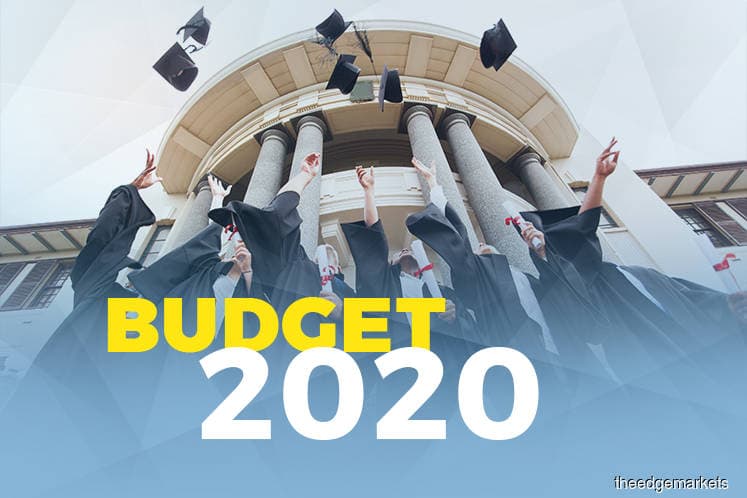
This article first appeared in The Edge Malaysia Weekly on October 14, 2019 - October 20, 2019
THE state of youth unemployment in Malaysia has often been worrying for policymakers. Last year, around half a million Malaysians were unemployed, of whom about 140,000 were graduates. Additionally, youth up to 24 years old made up more than half of the unemployed.
Meanwhile, barriers to employment for women continue to exist, especially for returning mothers. At just 55%, women’s participation in the workforce is still below the government’s target of 60%.
At the same time, the influx of foreign labourers has dampened wage growth among Malaysians while disincentivising businesses from investing in more productive capital and technology.
As at end-2018, there were officially 2.2 million foreign workers in the country, making up about 15% of the total workforce.
Hence, it is positive that under Budget 2020, the government has made it a priority to ensure that Malaysian youth and women are given adequate support and opportunities to participate in the workforce while, at the same time, not putting an excessive burden on companies to hire locals.
It could be said that the budget is a big win for youth and women in Malaysia. Under Budget 2020, RM6.5 billion will be allocated for the creation of 350,000 jobs that will, hopefully, reduce the dependence on foreign workers by more than 130,000.
“Overall, the government has tabled a positive budget in terms of attracting investments, job creation, reducing unemployment, reducing dependence on foreign workers, as well as providing incentives to employers, particularly SMEs (small and medium enterprises) to embrace new technologies and digitalisation,” says Datuk Shamsuddin Bardan, executive director of the Malaysian Employers Federation (MEF).
For starters, the government will launch the Malaysians@Work initiative, aimed at simultaneously creating better employment opportunities for youth and women, and reducing overdependence on low-skilled foreign workers.
What is interesting is that the government is taking on the mantle to support local workers to enable them to benefit from jobs created in the country — it plans to provide monthly wage incentives for up to two years. This is a radical approach to ensure that Malaysians pick up the shovels and work.
Not only will the youth or returning women workers be given wage incentives of RM500 per month for two years, employers will also be given up to RM300 per month for each new hire for two years.
“We are excited to hear about the Women@Work incentives for women and companies, to encourage and enable women to return to work,” says Sumitra Visvanathan, executive director of Women’s Aid Organisation, in a statement responding to the budget.
“Such support is especially important for domestic violence survivors who are rebuilding their lives and working towards financial independence,” she says, adding that the allocation of RM30 million for childcare facilities, especially in schools and hospitals, is also very much welcomed.
“Access to childcare would enable more women to participate in the workforce as, currently, over 2.56 million women in Malaysia are not working due to ‘housework or family responsibilities’,” she points out in the statement.
Shamsuddin of MEF says the Apprentice@Work programme encourages more youth to enter technical, vocational education and training (TVET) courses while employers stand to benefit from the extension of double tax deduction on expenses incurred when they participate in Sistem Latihan Dual Nasional for another two years.
“This is in addition to the double tax deduction currently given to companies undertaking the Structured Internship Programme (SIP) under TalentCorp,” he says, commending the government’s effort to make TVET part of the mainstream via collaborations with industries.
Apart from the Malaysians@Work programme, the government is also allocating RM5.9 billion for the development of TVET programmes through increased funding and by promoting greater industry collaborations.
Pathways for TVET graduates to pursue further studies will also be expanded starting next year, as trainees will have the avenue to pursue advance tertiary education in technical universities.
“The increased budget allocation for the promotion of the education sector, in particular for TVET, will also assist in upskilling the Malaysian workforce, who would accelerate industry initiatives to move up the value chain,” says Shamsuddin.
Meanwhile, Human Resources Development Fund chief executive Elanjelian Venugopal says the organisation is grateful to the government for the trust placed in it through the allocation of RM50 million for the provision of Industry 4.0 skills to the Malaysian workforce, as well as for the upskilling of youth from low-income families.
One of the regions facing challenges in creating high-quality job opportunities for its local population, especially its youth, is Iskandar Malaysia. Thus, Iskandar Regional Development Authority (IRDA) CEO Datuk Ismail Ibrahim is particularly excited about the budget.
“The economic situation and technology trends around the world are moving at a rapid and spontaneous pace. Catching up with these changes will require a lot of effort from everyone and all corners of Malaysia.
“We are glad to see that Budget 2020 is more mature and holistic, acknowledging the equal importance of both physical and rakyat development to adapt to these changes and strengthen the progress of the nation,” says Ismail in a statement on the budget.
Save by subscribing to us for your print and/or digital copy.
P/S: The Edge is also available on Apple's AppStore and Androids' Google Play.